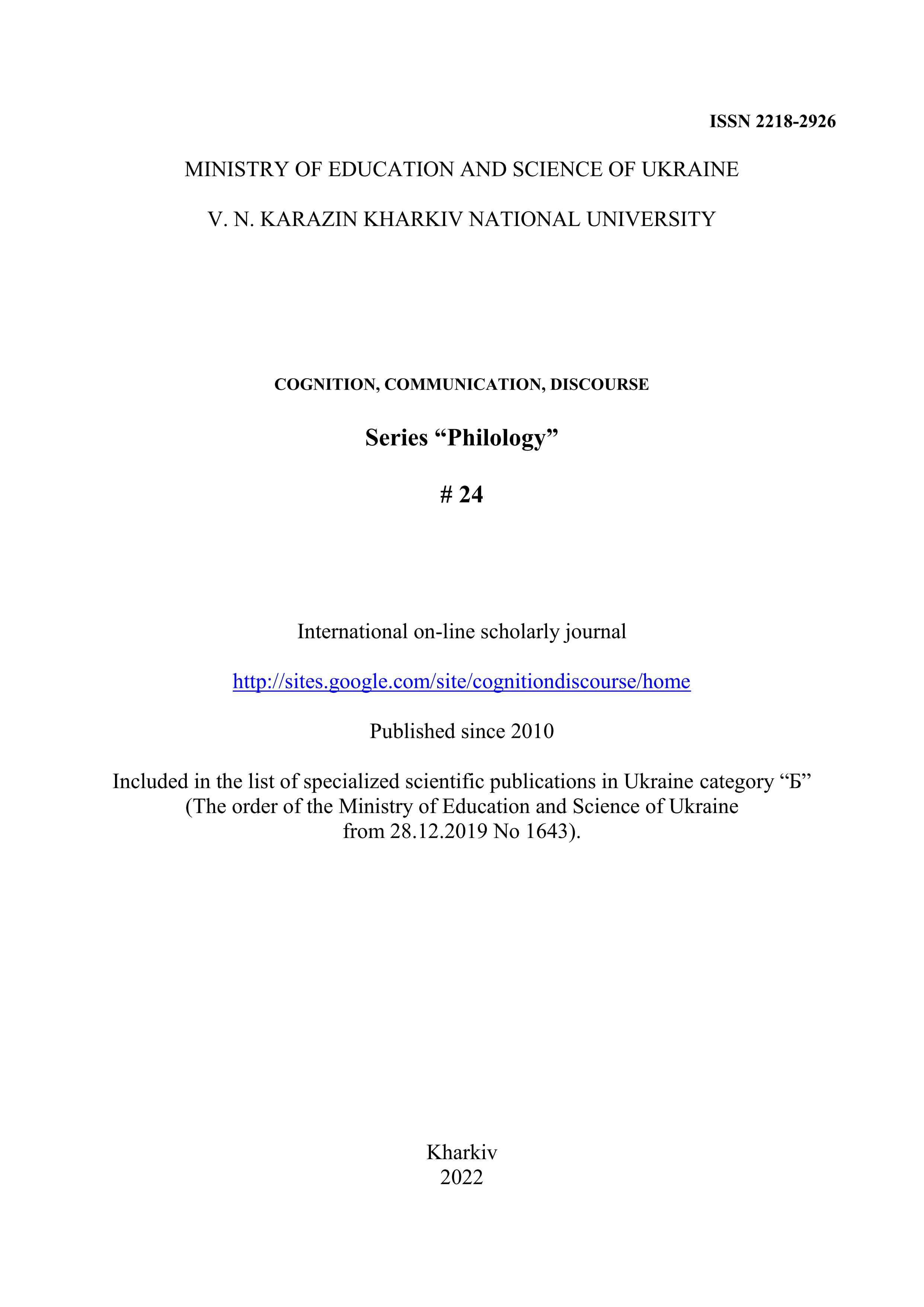Translating artlangs: the clash of worldviews
Abstract
The research is dedicated to the problem of translating artlangs as a means of the alternative worldview embodiment. The object of research is twofold: the worldview in its linguistic manifestation and artlangs – artistic languages created within literary discourse mainly for expressive purposes. The aim of the research is equally dual: to determine what (kind of) worldview is reflected in artlangs and how it can be reproduced in translation. Our first hypothesis outlines three instances of worldview clashes connected with the perception, interpretation and translation of a piece of fiction depicting an alternative reality via an artlang. The first occurs when the reader decodes the text and recreates in their mind the author’s artistic worldview, because the resulting ‘picture’ is never identical to the original one due to the uniqueness of information processing. The second occurs in translation, because the image of an alternative world in the translator’s mind is indeed the projection of that of the author, but formed under the influence of their own (target) worldview and incarnated through the available target linguistic resources. The third occurs when the target reader retrieves the information from the target text and once again forms their own view of the alternative reality. According to our second hypothesis, artlangs’ principal translatability is determined by their inextricable ties with natural donor language(s), though their reproduction is a highly demanding creative act whose outcome depends on a number of concomitant circumstances. Here belong: the relation between an artlang’s donor language(s) and a piece of fiction’s source language; the relation between a piece of fiction’s source language and its target language; and, finally, the method of artlang’s manufacturing.
Downloads
References
Downing, D. C. (2005). Into the Wardrobe: C. S. Lewis and the Narnia Chronicles. San Francisco:
Jossey-Bass.
Jakobson, R. (2000). On linguistic aspects of translation. In L. Venuti (Ed.), The translation studies reader (pp. 113–118). New York: Routledge.
Martyniuk, A. P. (2012). Slovnyk osnovnykh terminiv kohnityvno-dyskursyvnoi linhvistyky [The dictionary of the basic terms of cognitive and discursive linguistics]. Kharkiv: KhNU imeni V. N. Karazina.
Potebnia, A. A. (1913). Mysl y yazyk. Yazyk y narodnost. O natsyonalyzme [Thought and language.
Language and nation. About nationalism]. Kharkov: Typohrafyia “Myrnyi trud”.
Quine, W. V. (2013). Word and object. Foreword by Patricia Smith Churchland; preface to the new edition by Dagfinn Føllesdal. Cambridge, Massachusetts, London, England: The MIT Press.
Stria, I. (2018). Linguistic worldview in multilingual groups as an indicator of developing a communal identity: The case of Esperanto. Etnolingwistyka. Problemy Języka i Kultury, 30, 5–229. https://doi.org/10.17951/et.2018.30.215
Tolkien, J. R. R., (1983). A Secret Vice. In Ch. Tolkien (Ed.), The Monsters and the critics and other essays (pp. 198–223). London: George Allen and Unwin.
Copyright (c) 2022 Rebrii Oleksandr, Bondarenko Ievgeniia, Rebrii Inna

This work is licensed under a Creative Commons Attribution-NonCommercial-NoDerivatives 4.0 International License.
Authors, who publish with this journal, accept the following conditions:
The authors reserve the copyright of their work and transfer to the journal the right of the first publication of this work under the terms of the Creative Commons Attribution License (CC BY), which allows other persons to freely distribute a published work with mandatory reference to the authors of the original work and the first publication of the work in this journal.
Authors have the right to enter into separate additional agreements for the non-exclusive dissemination of the work in the form in which it was published by this journal (for example, to post the work in the electronic institutions' repository or to publish as part of a monograph), provided that the link to the first publication of the work in this journal is given.
The journal policy allows and encourages the authors to place the manuscripts on the Internet (for example, in the institutions' repositories or on personal websites), both before the presentation of this manuscript to the editorial board and during review procedure, as it contributes to the creation of productive scientific discussion and positively affects the efficiency and dynamics of citing the published work (see The Effect of Open Access).




